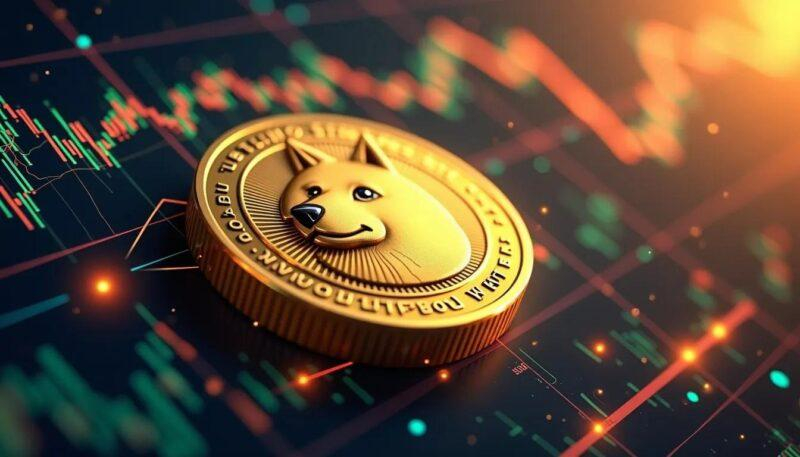In the ever-evolving landscape of cryptocurrency, Dogecoin has emerged from its playful origins to become a serious contender in the digital currency arena. Whether you’re a seasoned investor or a curious newcomer, understanding the nuances of transferring Dogecoin is essential for securing your assets and navigating the crypto world with confidence. This guide will walk you through the steps of moving your Dogecoin safely and efficiently, demystifying the process and empowering you to take full control of your digital wallet. Whether you’re shifting funds between wallets, making a purchase, or exploring new platforms, mastering the art of Dogecoin transfer is a key skill for today’s crypto enthusiast.
Preparing Your Dogecoin Wallet for a Secure Transfer
Before initiating any transfer, ensuring your Dogecoin wallet is fully prepared is essential to protect your assets from loss or theft. Start by verifying that your wallet software is up-to-date; updates often include critical security patches and improved encryption mechanisms. This step guards against vulnerabilities and helps maintain the integrity of your transactions.
Next, double-check your wallet’s backup and recovery options. Create a secure, offline copy of your private keys or seed phrase, and store them in a location that’s both safe and accessible only to you. Avoid digital storage methods that connect to the internet, as they increase the risk of hacking. Consider using hardware wallets or encrypted physical notes for maximum security.
Lastly, familiarize yourself with your wallet’s transaction settings. Some wallets allow you to customize fees or use additional verification steps like two-factor authentication (2FA). Here’s a quick overview of key wallet preparation checkpoints:
- Update wallet software to the latest version
- Back up private keys or seed phrases securely
- Enable two-factor authentication (2FA) if available
- Test a small transaction before moving large amounts
- Review recipient addresses carefully to avoid mistakes
| Preparation Step | Purpose |
|---|---|
| Software Update | Improve security and functionality |
| Backup Keys | Prevent permanent loss of access |
| Enable 2FA | Add an extra layer of protection |
| Small Test Transfer | Ensure accurate transaction process |
Understanding Network Fees and How to Optimize Them
When it comes to moving Dogecoin, network fees can sometimes feel like hidden obstacles eating into your balance. These fees are paid to miners or validators who process transactions on the blockchain, ensuring security and speed. However, unlike traditional bank fees, Dogecoin’s network fees are generally lower but can fluctuate based on network demand. Understanding how these fees work can help you avoid overpaying and make smarter transfers.
Key factors influencing network fees include:
- Transaction Size: Larger data transactions require higher fees.
- Network Congestion: Busy periods cause fees to spike as users compete for processing.
- Priority Level: Paying a higher fee can speed your transaction confirmation.
To optimize fees, consider timing your transfers during off-peak hours when the network is less crowded. Many wallets offer a customizable fee slider allowing you to balance between speed and cost. Below is a simple comparison table to guide your choice:
| Fee Level | Estimated Confirmation Time | Use Case |
|---|---|---|
| Low | 30+ minutes | Non-urgent transfers |
| Medium | 10-30 minutes | Everyday transactions |
| High | < 10 minutes | Urgent or large transfers |
Step-by-Step Process for Sending Dogecoin Safely
To begin, always verify the recipient’s Dogecoin wallet address with utmost care. A single mistyped character can cause your funds to be irretrievably lost. Before initiating a transfer, make sure you have copied the address directly from the recipient, and consider sending a small test amount first. This simple precaution can save you from potential mistakes and ensures the wallet is active and ready to receive.
- Double-check address via multiple channels (email, chat, QR code)
- Send a small test transaction (e.g., 0.01 DOGE)
- Confirm receipt before proceeding with the full amount
Next, access your Dogecoin wallet, whether it’s a hardware device, desktop client, or mobile app. Input the recipient’s address carefully, enter the amount to send, and review all transaction details. Look out for network fees and recommended transaction priority settings-opting for regular fees will save costs, while faster processing can be chosen if urgency is a priority. Once confident, authorize the transaction with your secure credentials, such as a PIN code or 2FA.
| Transaction Element | Typical Values | Notes |
|---|---|---|
| Amount | Any value in DOGE | Double-check input |
| Transaction Fee | 0.01 – 0.1 DOGE | Higher fee = faster confirmation |
| Wallet Address | 34-char alphanumeric | Copy/paste recommended |
After sending, monitor the transaction status through a Dogecoin block explorer. Enter your transaction ID or wallet address to track confirmations. Most wallets require at least 6 confirmations to consider the transfer fully verified, but this number can vary by recipient. Patience during this phase is key-avoid attempting multiple quick sends if the network is congested, as this can increase fees and delay your funds. Keeping your wallet backed up and secured ensures you can always verify and manage your transfers confidently.
Verifying Transaction Status and Troubleshooting Common Issues
After initiating a Dogecoin transfer, the best place to monitor its progress is the blockchain explorer. By entering your transaction ID (TXID), you can see real-time updates, including confirmation status, timestamp, and sender/receiver addresses. Keep in mind that the speed of confirmation depends on network congestion and the transaction fee paid; higher fees generally lead to quicker confirmations.
Encountering delays or errors? Start by checking these common pitfalls:
- Incorrect Wallet Address: Double-check the recipient’s Dogecoin address before sending. A mistyped character can lead to irreversible loss.
- Low Transaction Fees: If your fee is too low during heavy network traffic, your transaction might get stuck. Consider increasing the fee in such cases.
- Wallet Sync Issues: Sometimes, your wallet might not show the updated status if it’s not fully synced with the blockchain.
| Issue | Possible Cause | Recommended Action |
|---|---|---|
| Transaction Pending | Network congestion or low fee | Wait or increase fee if possible |
| Transaction Not Showing | Wallet out of sync | Resynchronize or restart wallet |
| Lost Funds | Wrong address entered | No recovery; double-check before sending |
Best Practices for Maintaining Privacy and Security During Transfers
When sending Dogecoin across wallets or exchanges, vigilance is your best ally. Always double-check the recipient’s wallet address – even a single mistyped character can result in the irreversible loss of your funds. Utilize copy-paste methods instead of typing addresses manually, and consider verifying the address through QR codes where possible. Before initiating any transfer, confirm the network fees and expected confirmation time to avoid surprises.
Lock down your digital footprint by employing secure connections. Avoid public Wi-Fi hotspots during transactions and use a trusted VPN to encrypt your data. If you’re handling large amounts, consider splitting the transfer into smaller chunks to minimize exposure risk. Additionally, always ensure your devices are free from malware by running updated antivirus scans and keeping your operating system patched.
Implement multi-layered security measures to strengthen your defenses:
- Two-factor Authentication (2FA): Add an extra layer beyond passwords for wallet or exchange logins.
- Hardware Wallets: Use offline devices to store private keys safely away from internet vulnerabilities.
- Regular Backups: Keep encrypted backups of wallet seed phrases in secure, physically separated locations.
Q&A
Q&A: Transferring Dogecoin – A Guide to Moving Your Crypto
Q1: What does it mean to transfer Dogecoin?
Transferring Dogecoin means sending your Doge tokens from one wallet or exchange account to another. It’s like handing over digital currency from your virtual pocket to someone else’s, or moving it between your own wallets for safekeeping or trading.
Q2: Why would I need to transfer Dogecoin?
There are several reasons: you might want to pay for goods or services, send some Doge to a friend, move coins to a more secure wallet, or transfer funds between exchanges for trading opportunities. Transferring is integral to using Dogecoin actively.
Q3: What do I need before initiating a Dogecoin transfer?
You’ll need:
- The recipient’s Dogecoin wallet address
- Access to your Dogecoin wallet where the coins currently reside
- Sufficient Dogecoin to cover the amount plus transaction fees
- A stable internet connection to process the transaction
Q4: How do I find my Dogecoin wallet address?
Your wallet address is a string of letters and numbers unique to your Dogecoin wallet, often starting with a “D”. It can be found in the “Receive” section of your wallet app or exchange account. Always double-check the address before sharing.
Q5: Are there fees involved when transferring Dogecoin?
Yes, Dogecoin transactions include a small network fee to incentivize miners who process and verify transactions on the blockchain. These fees are generally low compared to other cryptocurrencies, but they can fluctuate based on network demand.
Q6: How long does a Dogecoin transfer take?
Typically, Dogecoin transactions confirm within a few minutes. However, transfer times can vary depending on network congestion and the receiving platform’s policies. It’s advisable to be patient and verify the transaction status through a block explorer if needed.
Q7: Can I reverse a Dogecoin transaction once sent?
No. Once confirmed on the blockchain, a Dogecoin transaction is irreversible. That’s why verifying the recipient’s address and transfer details is crucial before sending.
Q8: What’s the safest way to transfer Dogecoin?
Use trusted wallets or exchanges, ensure your device is secure, double-check recipient information, and consider sending a small test amount first if transferring a large sum. Avoid public Wi-Fi during transfers for added security.
Q9: What should I do if my Dogecoin transfer isn’t showing up?
First, check the transaction status on a Dogecoin block explorer using your transaction ID. Sometimes, delays occur due to network congestion. If it remains unconfirmed for an extended period, contact your wallet or exchange support for assistance.
Q10: Can I transfer Dogecoin to any cryptocurrency wallet?
No, Dogecoin transfers must be sent to compatible Dogecoin wallet addresses. Sending Dogecoin to a wallet designed for another cryptocurrency can result in permanent loss of your funds.
Transferring Dogecoin is a straightforward process once you understand the basics. Armed with these answers, you’re ready to move your Doge smoothly and securely across the crypto universe. To the moon! 🚀🐕
In Conclusion
Transferring Dogecoin may seem like a small step in the vast world of cryptocurrency, but it’s an essential skill for any crypto enthusiast. With the right knowledge and a bit of caution, moving your Dogecoin can be a seamless and secure experience. Whether you’re sending funds to a friend, making a purchase, or consolidating your digital assets, understanding the process empowers you to navigate the blockchain with confidence. So next time you’re ready to transfer your Dogecoin, remember the key steps, stay vigilant, and enjoy the freedom that comes with controlling your own crypto journey.






